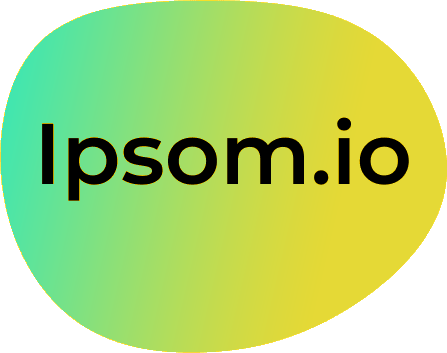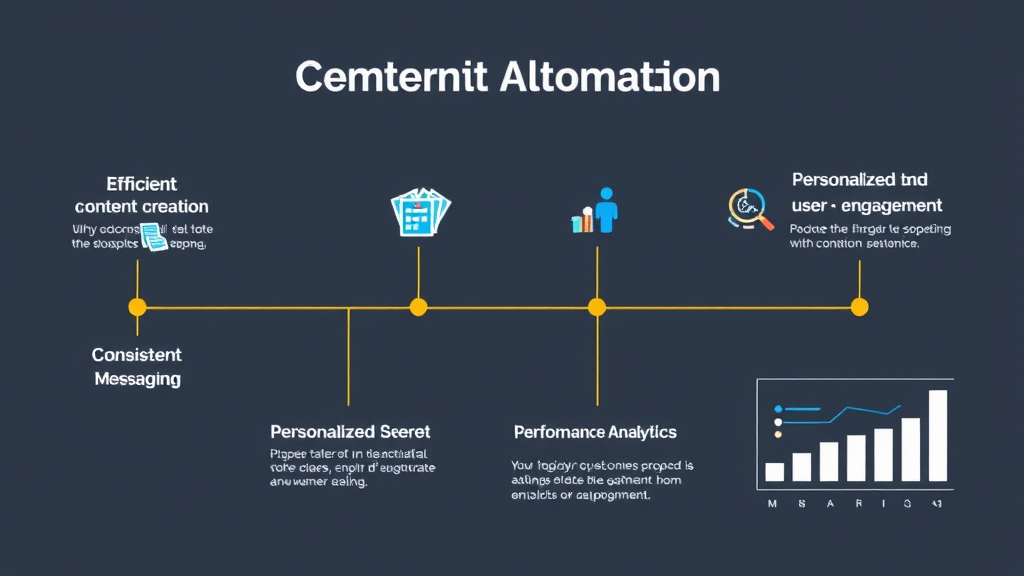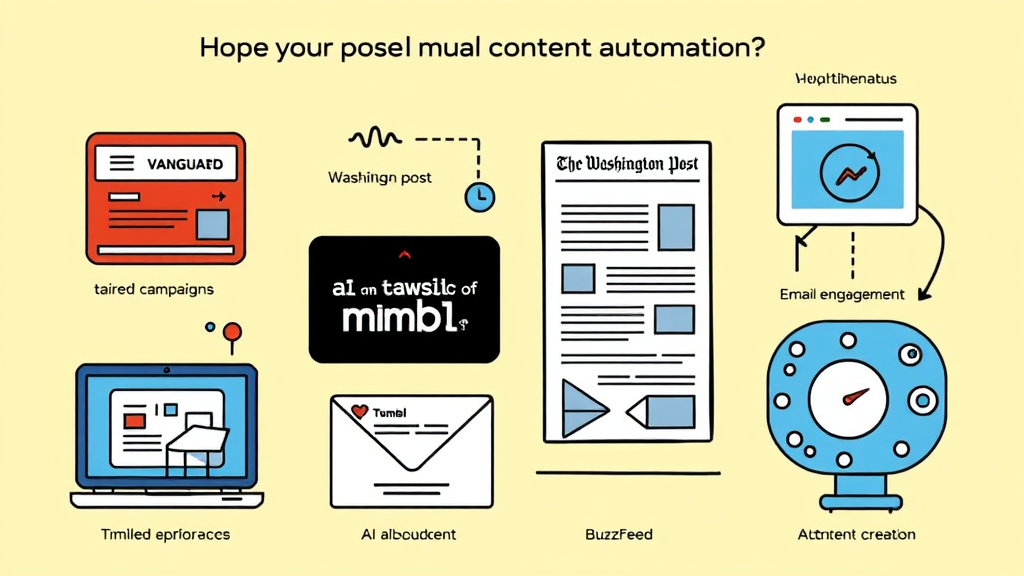Content automation is revolutionizing the way businesses create, manage, and distribute content by leveraging technology to streamline processes and enhance efficiency. By automating repetitive tasks, organizations can focus more on strategic initiatives and creative endeavors, leading to improved productivity and consistency across various platforms. This blog post delves into the multifaceted aspects of content automation, exploring its benefits, implementation strategies, and the challenges it presents.
Key Findings
-
Enhanced Efficiency and Productivity: Automating routine tasks allows teams to allocate more time to strategic and creative activities, boosting overall productivity.
-
Consistent Brand Messaging: Content automation ensures uniformity in tone, style, and messaging across all platforms, strengthening brand identity.
-
Cost Reduction: By minimizing manual labor and optimizing resources, businesses can achieve significant cost savings.
-
Improved Content Quality: Automation tools help eliminate human errors, ensuring high-quality and error-free content.
-
Scalability: Content automation enables businesses to scale their content production to meet growing demands without a proportional increase in resources.
-
Data-Driven Insights: Automated analytics provide valuable insights into content performance, aiding in informed decision-making and strategy refinement.
What Is Content Automation and How Does It Transform Content Creation?
Content automation leverages technology to streamline the creation, management, and distribution of content, reducing manual effort and enhancing efficiency.
Key benefits of content automation include:
-
Efficiency and Time Savings: Automating repetitive tasks allows teams to focus on strategic initiatives, accelerating content production without compromising quality.
-
Consistency and Quality: Automation ensures uniform messaging and branding across various platforms, maintaining a cohesive brand identity.
-
Personalization and Improved User Experience: By analyzing user data, automated systems can deliver tailored content, enhancing engagement and satisfaction.
-
Scalability and Adaptability: Businesses can efficiently scale content production to meet growing demands or adapt to market changes without significant resource increases.
-
Data-Driven Decision Making: Automation tools provide insights into content performance, enabling informed adjustments to strategies for better outcomes.
Implementing content automation involves:
-
Keyword Research and Topic Discovery: Utilize tools to identify relevant topics and optimize content for search engines.
-
AI-Powered Content Generation: Employ AI tools to draft content, which can be refined to align with brand voice and style.
-
Content Scheduling and Distribution: Use automation platforms to plan and publish content across multiple channels at optimal times.
-
Performance Tracking and Optimization: Monitor content effectiveness through analytics tools to inform future strategies.
By integrating content automation, organizations can enhance productivity, maintain consistency, and deliver personalized experiences, transforming their content creation processes.
External Sources: Learn More
Key Benefits of Implementing Content Automation in Your Business
Implementing content automation in your business offers several key benefits that can enhance efficiency, consistency, and overall marketing effectiveness.
Increased Efficiency
Automating repetitive tasks such as content scheduling, distribution, and performance tracking frees up valuable time for your team. This allows them to focus on strategic planning and creative initiatives, leading to improved productivity and more effective marketing campaigns.
Enhanced Scalability
Content automation enables your business to scale content efforts without significant manual intervention. Automation tools facilitate the creation, management, and distribution of content across multiple channels, allowing you to reach a broader audience efficiently.
Consistent Branding
Maintaining a consistent brand voice is crucial for building trust and recognition. Automation ensures that all content adheres to predefined templates and style guides, resulting in uniform messaging across various platforms and campaigns.
Personalized Customer Experiences
By leveraging data and segmentation, content automation allows for the delivery of personalized content tailored to individual customer preferences and behaviors. This targeted approach enhances engagement and increases conversion rates.
Improved Data Insights
Automation tools provide robust analytics and reporting capabilities, enabling you to track key performance metrics such as engagement rates and conversions. These insights support data-driven decision-making and the optimization of content strategies.
Cost Savings
While there is an initial investment in automation software, the long-term savings are substantial. By reducing the need for manual labor and minimizing errors, content automation leads to more efficient resource allocation and lower operational costs.
By integrating content automation into your business operations, you can achieve greater efficiency, scalability, and effectiveness in your marketing efforts.
External Sources: Learn More
Essential Tools and Technologies for Effective Content Automation
Effective content automation relies on a suite of specialized tools and technologies designed to streamline various aspects of the content lifecycle. These solutions enhance efficiency, maintain quality, and ensure consistency across multiple platforms.
Content Planning and Collaboration
Trello and monday.com are project management platforms that facilitate content planning and team collaboration. They offer visual boards and customizable workflows, enabling teams to organize tasks, set deadlines, and monitor progress effectively. (garagemedia.net, omnitas.com)
Content Creation and Writing
Jasper AI and Writesonic are AI-powered writing assistants that generate high-quality content, including blog posts, product descriptions, and social media updates. These tools help overcome writer's block and accelerate the content creation process. (theprocesshacker.com, fairenoughreview.com)
Editing and Proofreading
Grammarly is an AI-driven tool that ensures grammatical accuracy and enhances readability. It provides real-time feedback on grammar, style, and tone, helping writers produce polished and professional content.
Visual Content Design
Canva is a user-friendly design platform that enables the creation of engaging visuals, such as social media graphics and presentations, without requiring advanced design skills.
Social Media Management
Hootsuite and Buffer are platforms that automate the scheduling and distribution of content across multiple social media channels. They provide analytics to track performance and optimize social media strategies. (seocontentmachine.com, hypotenuse.ai)
Email Marketing Automation
Mailchimp and AWeber offer tools for creating and managing automated email campaigns. They provide customizable templates, audience segmentation, and performance analytics to enhance email marketing efforts. (garagemedia.net, fairenoughreview.com)
Content Distribution and Promotion
Taboola and Outbrain are content discovery platforms that boost visibility by recommending articles on high-traffic publisher sites. They operate on a pay-per-click model, ensuring cost-effective content promotion.
Analytics and Reporting
Google Analytics provides insights into user engagement, traffic sources, and content performance metrics, enabling data-driven decisions to refine content strategies.
By integrating these tools into your content automation strategy, you can enhance productivity, maintain content quality, and achieve consistent messaging across various platforms.
External Sources: Learn More
Step-by-Step Guide to Developing a Successful Content Automation Strategy
Developing a successful content automation strategy involves a series of structured steps to enhance efficiency and effectiveness in your content marketing efforts.
1. Define Your Goals and Objectives
Begin by clearly identifying what you aim to achieve with content automation. Whether it's increasing brand awareness, generating leads, or improving customer engagement, having specific, measurable goals will guide your strategy.
2. Understand Your Target Audience
Conduct thorough market research to analyze customer data and create detailed buyer personas. Understanding your audience's needs, interests, and behaviors enables you to tailor your content effectively.
3. Audit Existing Content
Evaluate your current content to identify strengths, weaknesses, and gaps. This assessment helps in determining which content can be repurposed or improved and where new content is needed.
4. Select Appropriate Automation Tools
Choose content automation tools that align with your goals and integrate seamlessly with your existing systems. Consider factors like scalability, user-friendliness, and support when making your selection.
5. Develop a Content Calendar
Plan and organize a comprehensive content calendar outlining what content will be published, when, and on which channels. Ensure the calendar aligns with your marketing goals and audience preferences.
6. Create and Automate Content Production
Leverage the chosen platform's content creation tools to produce high-quality, relevant content. Set up automation workflows for content production, approval, and scheduling to streamline processes.
7. Implement Content Distribution Strategies
Use the platform's capabilities to automate content distribution across multiple channels, including social media, email, and your website. Optimize content timing and frequency based on analytics and audience insights.
8. Monitor Performance and Analyze Data
Regularly review content performance metrics provided by the platform to gauge the success of your content marketing efforts. Analyze data to identify trends, audience preferences, and areas for improvement.
9. Iterate and Optimize Your Strategy
Use insights gained from performance data to make informed adjustments to your content strategy, automation workflows, and content calendar. Continuously optimize your approach to improve ROI and achieve your marketing objectives.
10. Train Your Team
Ensure your marketing team is well-versed in using the content automation platform. Provide training on best practices for content creation, automation strategies, and data analysis to maximize the effectiveness of your content automation efforts.
By following these steps, you can effectively implement a content automation strategy that streamlines your content marketing processes, enhances efficiency, and achieves better results.
External Sources: Learn More
Transform your workload and boost your success—partner with ipsom.io or connect with us at office@ipsom.io.
Overcoming Common Challenges in Content Automation Implementation
Implementing content automation can streamline workflows and enhance productivity. However, several challenges may arise during its adoption. Addressing these effectively ensures a successful integration.
Resistance to Change
Employees may be hesitant to adopt new technologies, fearing job displacement or increased complexity. To mitigate this:
-
Communication: Clearly articulate the benefits of content automation, emphasizing how it can reduce monotonous tasks and allow focus on strategic initiatives.
-
Involvement: Engage team members in the decision-making process to foster a sense of ownership.
-
Training: Provide comprehensive training sessions to build confidence and competence in using new tools.
Technical Integration Issues
Integrating automation tools with existing systems can be complex. To address this:
-
Evaluation: Choose automation tools that align with your current infrastructure and offer seamless integration capabilities.
-
Testing: Conduct thorough testing to identify and resolve compatibility issues before full implementation.
-
Support: Ensure access to technical support for troubleshooting and assistance.
Maintaining Content Quality
Automated content generation may lead to inconsistencies or errors. To maintain quality:
-
Guidelines: Establish clear content standards and guidelines.
-
Review: Implement manual review processes to oversee automated outputs.
-
Feedback: Create feedback loops to continuously improve content quality.
Over-Reliance on Automation
Excessive dependence on automation can result in impersonal interactions. To prevent this:
-
Balance: Combine automated processes with human oversight to ensure content remains authentic and engaging.
-
Personalization: Use automation to handle repetitive tasks while reserving personalized content creation for human input.
Data Security and Privacy Concerns
Handling sensitive information through automation raises security issues. To safeguard data:
-
Security Measures: Implement robust encryption and secure data storage solutions.
-
Compliance: Ensure adherence to data protection regulations to maintain user trust.
By proactively addressing these challenges, organizations can effectively implement content automation, leading to enhanced efficiency and content quality.
Real-World Examples: How Businesses Are Leveraging Content Automation for Success
Businesses across various industries are increasingly adopting content automation to enhance efficiency, personalize customer interactions, and drive growth. Here are some real-world examples illustrating the successful implementation of content automation strategies:
Vanguard's Personalized Marketing Campaigns
Vanguard, a leading investment management company, faced challenges in differentiating its marketing messages within the highly regulated financial sector. To address this, Vanguard partnered with Persado, an AI-driven platform specializing in personalized marketing content. By leveraging Persado's capabilities, Vanguard generated tailored LinkedIn messages that resonated with their target audience. This approach led to a 15.76% increase in click-through rates, enhancing customer engagement while maintaining compliance with industry regulations.
The Washington Post's AI-Generated News Stories
In 2019, The Washington Post introduced Heliograf, an AI-powered tool designed to automate news story creation. Heliograf utilizes machine learning algorithms to analyze data and generate real-time news articles. This innovation enabled the newspaper to cover a broader range of events more efficiently, resulting in a significant increase in readership and engagement.
Tumblr's Enhanced User Engagement through Email Automation
Tumblr aimed to strengthen user connections beyond its platform by delivering personalized content via email. By implementing HubSpot's email automation tools, Tumblr segmented its audience based on interests and behaviors, allowing for targeted, personalized email campaigns. This strategy led to a doubling of original posts, a tripling of likes, and a fivefold increase in reblogs per user, significantly boosting user engagement.
BuzzFeed's AI-Driven Content Creation
BuzzFeed, known for its viral content, leveraged AI tools like Pound and BuzzBot to analyze data and generate content that resonates with its audience. Pound tracks content distribution patterns across social media, while BuzzBot assists in real-time content creation and distribution. These AI-driven strategies have enabled BuzzFeed to maintain a competitive edge in the dynamic online media landscape.
These examples demonstrate the transformative impact of content automation across different sectors, highlighting its potential to enhance efficiency, personalize customer interactions, and drive business growth.
External Sources: Learn More
Future Trends: The Evolving Landscape of Content Automation
The landscape of content automation is rapidly evolving, driven by technological advancements and changing consumer expectations. Several key trends are shaping the future of this field:
Integration of Artificial Intelligence and Machine Learning
Artificial Intelligence (AI) and Machine Learning (ML) are revolutionizing content automation by enabling more sophisticated data analysis and content generation. These technologies allow for the creation of high-quality, personalized content at scale, enhancing user engagement and operational efficiency.
Enhanced Personalization and Targeting
Leveraging AI and data analytics, content automation tools can deliver highly personalized content tailored to individual user preferences. This approach increases engagement and conversion rates by providing relevant and timely content experiences.
Integration with IoT and Voice Assistants
The integration of content automation with Internet of Things (IoT) devices and voice assistants is gaining traction. This synergy enables seamless content delivery and interactive user experiences, allowing users to access information hands-free and on-demand.
Ethical Considerations and Quality Assurance
As content automation becomes more prevalent, ensuring the quality and authenticity of automated content is paramount. Implementing stringent quality control processes and addressing ethical concerns, such as plagiarism and bias, are essential to maintain trust and credibility.
By embracing these trends, organizations can harness the full potential of content automation to deliver more engaging, personalized, and efficient content experiences.
External Sources: Learn More
Transform your workflow and unleash your potential—visit ipsom.io or drop us a message at office@ipsom.io.
FAQ – Frequently Asked Questions
What is content automation and how does it work?
Content automation involves using technology to streamline the creation, management, and distribution of digital content, reducing manual effort and enhancing efficiency. It encompasses tasks such as content generation, scheduling, distribution, and performance analysis.
By automating repetitive processes, businesses can maintain consistency, improve content quality, and free up time for strategic initiatives. This approach is applicable to various content types, including articles, blogs, social media posts, videos, and images.
How can content automation improve my marketing strategy?
Content automation enhances your marketing strategy by streamlining repetitive tasks, allowing your team to focus on strategic planning and creative development. It ensures consistent content delivery across various platforms, strengthening brand identity. Automation facilitates personalized content experiences by analyzing customer data, leading to higher engagement and conversion rates. Additionally, it provides valuable analytics, enabling data-driven decisions to optimize your campaigns. By automating content distribution, you can efficiently scale your efforts, reaching a broader audience without significant manual intervention. Overall, content automation improves efficiency, consistency, personalization, and scalability in your marketing initiatives.
What are the best tools for content automation?
Content automation tools streamline the creation, management, and distribution of content, enhancing efficiency and consistency. Here are some top tools to consider:
1. HubSpot Marketing Hub
An all-in-one platform offering email automation, CRM integration, and a content management system (CMS). It provides comprehensive analytics to track performance and optimize strategies.
2. Hootsuite
A robust social media management tool that allows scheduling posts across multiple platforms, social listening, and analytics. Its AI-powered assistant, OwlyWriter, helps generate engaging content and suggests optimal posting times.
3. Sprout Social
Designed for social media managers, it offers scheduling, analytics, monitoring, and engagement tools. It also provides competitor analysis to refine your social media strategy.
4. CoSchedule
Features an editorial calendar, post scheduling, content collaboration, and analytics. It's ideal for marketing teams and content creators seeking organized content distribution.
5. Buffer
Simplifies social media scheduling and management, offering analytics and team collaboration features. It's suitable for small businesses and solopreneurs.
6. Grammarly
An AI-powered writing assistant that ensures error-free and engaging content by providing real-time feedback on grammar, style, and tone.
7. Marketo Engage
A comprehensive marketing automation solution tailored for enterprise-level organizations, offering lead management, multi-channel campaigns, and advanced analytics.
8. Brevo
An affordable, all-in-one multichannel marketing campaign manager for email, SMS, and WhatsApp. It offers AI-generated email content and predictive sending to optimize campaign timing.
9. SocialBee
An all-in-one social media management tool that helps businesses streamline their social media presence with features like AI post generation, content calendar, and analytics.
10. Semrush
A comprehensive suite offering tools for competitive analysis, content gap identification, AI-based content optimization, and keyword research. It's ideal for developing a full digital marketing and SEO strategy.
Selecting the right tool depends on your specific needs, such as social media management, email marketing, or comprehensive content strategy development.
Is content automation suitable for small businesses?
Yes, content automation is highly suitable for small businesses. It helps overcome challenges like limited time and resources by streamlining content creation and distribution. Automation tools can handle tasks such as social media posting, email marketing, and blog management, allowing businesses to maintain a consistent online presence without significant manual effort. This leads to increased efficiency, cost savings, and improved customer engagement. Many small businesses are already leveraging AI-enabled tools to enhance their operations.
How do I measure the success of my content automation efforts?
To effectively measure the success of your content automation efforts, focus on the following key performance indicators (KPIs):
-
Engagement Metrics:
- Click-Through Rate (CTR): The percentage of recipients who click on a link within your content, indicating its effectiveness in prompting action.
- Social Interactions: Monitor likes, shares, comments, and mentions to assess audience engagement and content resonance.
- Bounce Rate: The percentage of visitors who leave your site after viewing only one page; a lower rate suggests more engaging content.
- Time on Page: The average duration visitors spend on your content, reflecting its relevance and appeal.
-
Conversion Metrics:
- Conversion Rate: The percentage of users who complete a desired action (e.g., making a purchase, signing up for a newsletter) after engaging with your content.
- Lead Generation: The number of new leads acquired through your content, indicating its effectiveness in attracting potential customers.
- Customer Acquisition Cost (CAC): The cost associated with acquiring a new customer via your content efforts; lower CAC signifies more efficient campaigns.
-
Efficiency Metrics:
- Content Production Speed: The time taken to create and publish content, measuring the efficiency of your automation processes.
- Cost per Content Piece: The expense incurred per piece of content produced, helping evaluate the cost-effectiveness of automation.
- Content Accuracy: The precision and correctness of automated content, ensuring quality and credibility.
-
Return on Investment (ROI):
- Revenue Generated: The total income directly attributed to your automated content campaigns.
- Customer Lifetime Value (CLV): The total value a customer brings over their relationship with your business, indicating long-term success.
- Overall ROI: The net profit from your content automation efforts relative to their cost, assessing overall financial effectiveness.
Regularly monitoring these KPIs will provide insights into the performance of your content automation strategy, allowing you to make data-driven adjustments for continuous improvement.
Can content automation replace human creativity in content creation?
Content automation tools can efficiently generate text and handle repetitive tasks, but they lack the emotional depth, originality, and contextual understanding inherent in human creativity. While AI can assist in content creation, it cannot fully replace the nuanced storytelling and emotional connection that human creators provide.
What are the potential risks associated with content automation?
Content automation offers efficiency and scalability but comes with several potential risks:
-
Loss of Personal Touch: Automated content may lack the creativity and emotional resonance that human-generated content provides, leading to impersonal or generic outputs.
-
Quality Control Issues: Automated systems can produce content with errors, inaccuracies, or awkward phrasing, necessitating human oversight to maintain quality.
-
Overreliance on Technology: Dependence on automation tools can lead to complacency, with potential technical glitches causing errors in content generation or delivery.
-
Security Vulnerabilities: Automation processes may introduce new security threats, such as data breaches or unauthorized access, if not properly managed.
-
Ethical Considerations: Automated content may inadvertently produce biased or unethical material, potentially harming a brand's reputation.
-
Job Displacement: The adoption of content automation can lead to reduced demand for human content creators, raising concerns about employment in the industry.
Balancing automation with human oversight is essential to mitigate these risks and ensure content remains engaging, accurate, and aligned with brand values.
How does content automation impact SEO performance?
Content automation can significantly influence SEO performance by enhancing efficiency, consistency, and scalability in content creation. Automated tools streamline tasks such as keyword research, content generation, and performance monitoring, allowing businesses to maintain a regular publishing schedule and improve search engine rankings.
However, over-reliance on automation may lead to challenges. Automated content can sometimes lack the depth and originality that engage readers, potentially resulting in lower user engagement and higher bounce rates. Additionally, excessive automation might lead to keyword stuffing or the production of low-quality content, which can negatively impact search rankings.
To optimize SEO performance, it's crucial to balance automation with human oversight. Ensuring that automated content is high-quality, original, and relevant helps maintain user engagement and search engine credibility. Regularly reviewing and refining automated processes can mitigate potential drawbacks and enhance overall SEO effectiveness.
What are the initial steps to implement content automation in my organization?
Implementing content automation in your organization involves several key steps:
-
Define Your Goals: Clearly establish what you aim to achieve with content automation, such as improving efficiency, increasing content output, or enhancing personalization.
-
Conduct a Content Audit: Evaluate your existing content to identify strengths, weaknesses, and areas where automation can add value.
-
Map Out Your Content Workflow: Document each step of your content creation and distribution process to pinpoint tasks suitable for automation.
-
Choose the Right Tools: Select automation tools that align with your objectives and integrate well with your existing systems.
-
Train Your Team: Provide comprehensive training to ensure your team can effectively use the new automation tools.
-
Monitor and Optimize: Continuously assess the performance of your automated processes and make necessary adjustments to improve efficiency and effectiveness.
By following these steps, you can successfully integrate content automation into your organization's workflow.
How can I ensure the quality of content produced through automation?
Ensuring the quality of content produced through automation involves a combination of strategic planning, human oversight, and technological tools. Here are key practices to consider:
1. Establish Clear Guidelines and Standards
Develop comprehensive style guides and editorial standards that define your brand's voice, tone, and formatting preferences. These guidelines serve as a reference for both automated systems and human reviewers, ensuring consistency across all content.
2. Balance Automation with Human Oversight
While automation enhances efficiency, human involvement is crucial for maintaining quality and creativity. Implement a review process where human editors assess automated content for accuracy, brand alignment, and originality.
3. Implement Robust Quality Assurance Processes
Establish clear quality standards and conduct regular testing to identify errors or inconsistencies in automated content. Incorporate feedback loops and collaborate with subject matter experts to ensure accuracy and relevance.
4. Utilize Technology for Quality Checks
Leverage tools like grammar and style checkers, plagiarism detection software, and SEO auditing applications to maintain high-quality standards. These technologies can quickly identify issues that might be overlooked in manual reviews.
5. Train Your Team
Provide comprehensive training to team members involved in content automation. Ensure they understand the importance of quality assurance and are equipped with the necessary skills to identify and rectify quality issues.
6. Monitor and Analyze Performance
Regularly track performance metrics such as engagement rates and conversion rates to assess the effectiveness of automated content. Use these insights to make informed decisions and continuously improve your content strategy.
By integrating these practices, you can effectively ensure that your automated content maintains high quality, aligns with your brand standards, and resonates with your audience.






